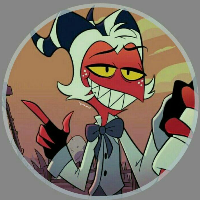Like many, I find I can come up with cool setting ideas and various characters, but one thing I struggle with is figuring out how to wrap everything up.
What’s your process of nicely crafting the middle of your narrative and flowing it naturally into a satisfying ending?
So, disclaimer, but I definitely come from the more structured, genre side of things with my writing.
I think a lot of deciding what your ending will be has to do with what kind of story you want to tell. Most stories answer a question – will these two lovebirds get together? Will the characters escape the haunted house alive? Will this soldier live through this war, and if so, how will the war have changed him?
I would recommend nailing down what question your story fundamentally answers, and then figure out how your ending answers it. Of course, that’s a very simplified way of putting it, but I think starting out simple and building things out from there is how you can get the ball rolling on your story. Once you know how it ends, you know what pieces need to be in place for that ending to work … and as you look to see what pieces you need to put in place, you start to see the shape of your story as a whole.
Disclaimer: I’m not a very structured writer, I’m a pantser if we use Nanowrimo terms
I have only finished short stories but for those I tend to start thinking about the end before I start writing. I get the general idea of where I want to end up and start writing with that end goal in mind. While writing if I come up with a different idea I will change how the ending happens, but I like trying to put the puzzle pieces together to make a satisfying story with some subtle foreshadowing that I hope the reader would like.
I don’t believe there is a right way to do it, and if you write it one way in the first draft, you don’t have to keep it the same during subsequent drafts which is nice. Sometimes it’s good to get something down and then ponder on it and see if there was a better way to wrap it up.
Hope this helps and good luck writing!
Would you mind giving some examples of some cases where you thought of an ending and worked backwards to reach that conclusion? I’m quite interested.
Will do, I need to search for a good example. For a while I had been writing a serialized story and most of those “chapters” were written with that method. It may take me a bit but I’ll pull something together (if I can log onto Beehaw on a browser it will go quicker, on mobile now)
Edit: So reading back with what I did, it is kind of a small outline for the chapter vs a full on nothing but the ending. My main goal in this was to make the last word of the chapter be the chapter title. Not sure if this is the best example and it varies from what I initially said due to my poor memory of it, but I do tend to take into account how it will potentially end well before I start writing. Hope this helps!

A good place to start is to look at stories you love and see how they’re structured. I actually find this very useful with movies and some TV shows. Ask yourself how they arrived at that ending, and if it was implied from the beginning. And if it was implied, ask yourself how.
You can also follow some writing formulas to get a feel for them. A common one is the “try-fail” approach. Your characters are attempting to accomplish something – have them fail twice, and then finally succeed. The failures themselves can be very interesting. For example, Frodo tries to take the ring to Mount Doom, but runs into the Ring Wraiths. They act as an obstacle, so the path is no longer clear.
If you take that approach, in my experience the failures will often suggest the successful ending.
Once you’ve written the story, go back and read it through. Sometimes endings will feel jarring because there’s not enough of a suggestion for them earlier on. You can write in little hints, add a dream sequence, whatever. Over time as you practice with this, you’ll develop some mastery and be able to write subtler and more mind-blowing endings.
Hope that helps.
I found that having someone who likes your writing read it, then give their theories about how it will end can be a great tactic. You can give them what they expect, or use it to create an unexpected twist.
There is no RIGHT way to write. Show the world your diversity! The world will read your words and ideas if they’re original enough.
I look forth to an editor free world!



